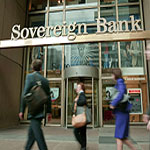Spain’s largest bank, Banco Santander Central Hispano, has made another move toward its goal of becoming one of the biggest financial institutions in the world. With its announcement on October 24 that it will purchase 19.8% of Sovereign Bancorp of Philadelphia, Santander returns to the U.S. where, from 1991 to 1997, it owned a 29% stake in First Fidelity Bancorp. Santander’s action has for now left BBVA, Spain’s second-largest bank, in the dust, despite BBVA’s acquisitions last year of two small U.S. institutions focused on the Hispanic population. What is Santander’s overall strategy? Will its latest move put more pressure on BBVA, or are the two banks going after very different markets?

Sign up to stay informed about our latest article releases.